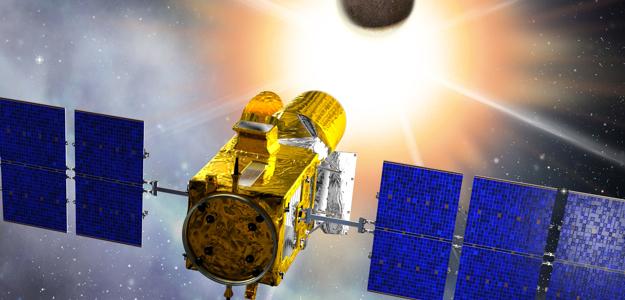 A moment of silence, please, for the end of the COROT space mission – and with it, the end of an entire type of space exploration altogether. Well, at least temporarily.
A moment of silence, please, for the end of the COROT space mission – and with it, the end of an entire type of space exploration altogether. Well, at least temporarily.
New Scientist reports that the COROT mission (short for “COnvection ROtation and planetary Transits,” in case you were curious) has been officially terminated, following the complete failure of the computer system on board the spacecraft itself. Launched in December 2006 by the French Space Agency working with the support of the European Space Agency, the COROT mission was the first time a craft had been sent into space with the express purpose of detecting transiting extrasolar planets, laying the groundwork for NASA’s Kepler mission.
According to New Scientist, the last remaining computer onboard the COROT craft stopping receiving information from its 10 inch telescope last November, essentially rendering it useless. Since that time, scientists at the French Space Agency have been in constant contact with the computer, trying to fix the problem remotely and jumpstart the program. Unfortunately, that turned out to be impossible. “All the trials have not been successful, so now we have decided to stop the investigation,” scientist Olivier La Marle told New Scientist.
This doesn’t mean that COROT was a failure, La Marle points out. After all, the mission went on twice as long as was originally planned, discovering more than 30 confirmed planets and about 100 planet candidate along the way. Nonetheless, La Marle said, “You’re always disappointed [by a situation like this]. You learn so much from a mission like COROT that you always want to extend it.”
Currently, COROT is in Earth orbit, but it’s been decided that the price of sending astronauts up to manually repair the problem would equal or even dwarf the cost of simply creating a new COROT-style craft altogether. Instead, COROT is expected to eventually fall out of orbit and burn up during re-entry. Both the European Space Agency and NASA have new exoplanet missions launching in 2017, but until then, COROT’s failure will mean that any exoplanet research carried out for the next four years will be conducted solely on the ground.
Of the two 2017 missions, the ESA’s Characterising Exoplanets Satellite will be looking for signs of habitability on known planets, while NASA’s Transiting Exoplanet Survey Satellite (TESS) will instead be looking for new star-crossing worlds, focusing in particular on smaller planets near stars.
Although exoplanet work is grounded for the next few years, don’t assume that nothing is going to be done in that area. La Marle says the success of COROT and NASA’s Kepler has inspired new ground-based observatories to begin work, and for everyone else, there’s still a lot of information gathered by the space-bound telescopes to go through. Even if COROT’s science days are over, the overall mission continues.
Editors' Recommendations
- First indications of a rare, rainbow ‘glory effect’ on hellish exoplanet
- James Webb photographs two potential exoplanets orbiting white dwarfs
- Astronomers discover a super-Earth located in the habitable zone
- Astronomers discover extremely hot exoplanet with ‘lava hemisphere’
- See the weather patterns on a wild, super hot exoplanet


